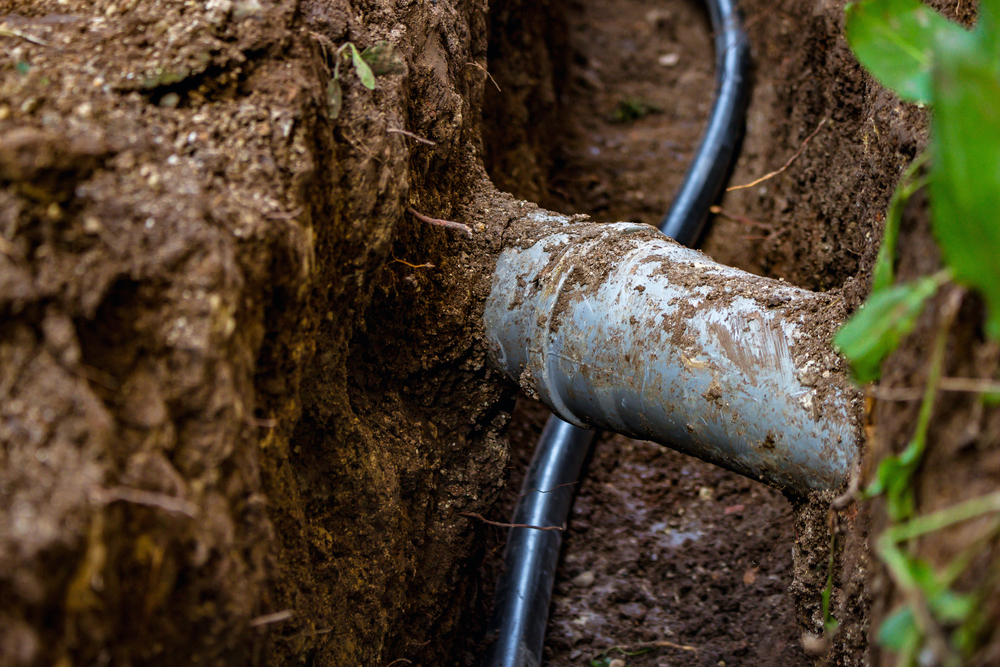How to Build Over a Sewer Pipe
If you are planning to carry out building work on your property, it is important to make sure that the construction does not cause any damage to the nearby public sewer system. Whether you are creating a new structure or extending an existing building, your project will require Building Regulations approval to ensure that it poses no risk to the underground sewer pipes in the area.
As such, obtaining the right planning permission should be a top priority when planning this kind of building work, to make sure that both your property and the underlying pipe infrastructure can be legally accommodated. Doing so during your planning phase will give plenty of time for your local authority or building control body to inform you whether it is safe to proceed, and provide you with the necessary legal documentation.
Here we explain how to factor in these key elements of infrastructure when planning and carrying out a construction project, and why it is essential to do so.

What are the requirements for building over a sewer pipe?
As a building owner or construction contractor, you have an obligation to protect any infrastructure around your site that belongs to other landowners or the council, including the public sewer system. These requirements are outlined in the Sewerage Sector Guidance documents. This applies equally to private construction work (such as extensions to private properties) and to commercial construction.
Public sewer regulations state that you will need a formal building-over agreement if:
- Your structure is currently, or will be, within 3m of the centreline of the pipe;
- The pipe’s diameter exceeds 225m; or
- The pipe’s bottom depth is deeper than 3m below ground level.
If any of these apply to your building work, the public sewer authority will need to carry out a further assessment to ensure that your plans adhere to Building Regulations, or are amended as necessary.
This is because the construction of building foundations cannot interfere with the structural integrity of the existing sewers, or block off essential access to the pipes. Failure to comply with these requirements could result in damage to both the pipes and your property, and increase the risk of legal action being taken against you. You may be liable to pay for any repairs that are necessary or cover the cost of relocating sewer access points.
Typically, projects that fall within homeowners’ permitted development rights do not require formal Building Regulations approval, including work pertaining to conservatories, carports and porches. However, even in these instances, it is best to check whether there is any risk of the building works interfering with a sewer pipe before you begin.
How will I know if there is a pipe under or near my building?
There are often signs of drainage infrastructure that can help you to identify whether there are underground sewage pipes or lateral drains located in the area in which you intend to build.
Lateral drains are usually easy to spot, thanks to visible external pipes that are attached to the outsides of buildings and lead into the ground. Underground sewage pipes are harder to locate, but access points in the form of manholes can inform you that there are pipes passing under the surface.
You will need to know the direction that these underground pipes travel in, and their size and depth, in order to comply with regulations. If the local council has recently conducted an assessment of the site, they may be able to provide you with details about where sewer pipes or other elements of public infrastructure are located, to help you avoid causing any damage to these systems. Alternatively, this information may be included in any legal documentation you received when you took on the property.
If you cannot find the relevant paperwork – or you cannot obtain drainage plans from your local council or building control body – it may be necessary to undertake a CCTV survey of your drains. This will enable you to map the sewer network in the area where you intend to carry out construction, and thereby comply with the relevant legal requirements.
How do I apply for a formal build-over agreement?
An application to your local water authority will need to include a diagram of your building plans in the form of a cross-section drawing. Structural engineers can then survey the underground sewer pipes below and surrounding your proposed site to ensure there is no risk of damage, giving the local authority the information it needs to either approve the project or reject it.
You will also be expected to pay a fee to secure the build-over agreement, which will vary in price depending on your local water authority.
With the build-over agreement granted, you will be able to commence your building works without the risk of the project interfering with public sewers. If you are unsure about any aspect of this process, get in touch with your local water authority or council to learn what you need to do to meet your regulatory obligations.
Find out more
For expert assistance on how to ensure that your construction project does not create any risk to the public sewer, consult the team at Lanes Group. We can carry out CCTV drain surveys to help you plan a project while minimising the risk of damage to the public sewer system, and provide advice to help you meet the necessary regulations.
Call us today on 0800 526 488 or fill out an online contact form.







